The 2022 European Open Banking League Table



Fast-forward from 2018 and the inception of PSD2 to present day, and we are witnessing its most significant growth period to date.
Open banking is not just a European initiative but a worldwide experience, now in more than 50 countries across the globe. Adoption is increasing at an exponential rate and account-to-account payments are accelerating at pace.
We’re also starting to see Big Tech move into the space, an exciting landmark moment for our industry and endorsement of open banking that will drive further adoption, innovation, and investment across the entire ecosystem.
All of this means that mainstream adoption is simply no longer a case of if, but when. When we do get there, we will be one step closer to achieving open finance and beyond that horizon, open data.
In an open financial ecosystem, our financial data such as mortgages, savings, pensions, insurance, investments, and credit will be accessible to third parties, creating more innovative and personalised services for everyone. Open data takes this one step further, moving beyond financial services and into almost every area of our lives, from healthcare to technology.
At Yapily, our mission is to create the open economy of the future. How will we do it?
By building scalable, reliable, and secure


infrastructure and tools of the highest quality, broadest coverage, and deepest capability to power the next wave of innovation.
This report builds on our 2021 European open banking league table but is also the first of its kind, providing a comprehensive view of how open banking is maturing across 18 different markets.
At Yapily, our mission is to create the open economy of the future. How will we do it?
By building scalable, reliable, and secure infrastructure and tools of the highest quality, broadest coverage, and deepest capability to power the next wave of innovation.
As Europe’s leading open banking infrastructure provider, we are perfectly positioned to understand how banks, enterprise firms, payment service providers (PSPs) and businesses are consuming open banking APIs to help them navigate this terrain with the same goal in mind: to accelerate open banking and propel Europe on its journey towards open finance.
I hope you find it useful.

At Yapily, our mission is to create the open economy of the future. How will we do it? By building scalable, reliable, and secure infrastructure and tools of the highest quality, broadest coverage, and deepest capability to power the next wave of innovation.



Last year, we published the first annual open banking league table to provide a holistic view of open banking’s maturity, readiness, and adoption across Europe. It was used by banks, industry associations, and even regulatory bodies to better understand progress across the wider open banking ecosystem and help identify areas for improvement in specific markets.
Now in its second year, we have more insight, more analysis, and more understanding than ever before. Combining expertise, knowledge, and experience with data from our open banking platform, we have ranked 18 European countries on a 10-point scale according to the maturity of open banking in each market.
The league table is based on a number of criteria, including local regulatory oversight and enforcement, digital readiness of the population, domestic payments infrastructure, bank integration, presence of third party providers (TPPs), and API performance and standardisation.
We have more insight, more analysis, and more understanding than ever before.
Key findings include:
Open banking maturity continues to accelerate across Europe with 67% of the markets analysed improving or maintaining their scores since 2021
Key drivers behind these improvements include the implementation of regulatory standards, consumer adoption of domestic instant payment methods, and increased levels of bank integration.
A higher average score of 6.9 out of 10 increase of 1.5 points over the last 12 months also indicates that levels of open banking adoption, investment, and innovation have continued to increase, representing Europe’s march towards open finance.
The UK’s open banking ecosystem remains top of the leaderboard for the second year running, but EU member states are hot on its heels with Germany placing second and Sweden third.
Areas for improvement include improved collaboration between banks, governments, regulators, and TPPs at the local and EU level to address a lack of standardisation and inconsistent levels of regulatory oversight and enforcement.

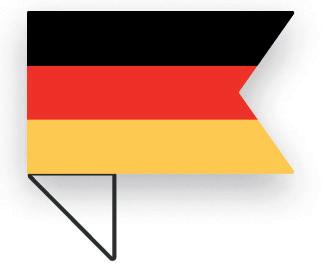
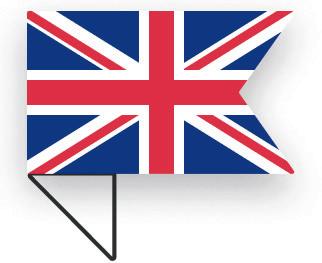
 MARIA PALMIERI, DIRECTOR OF PUBLIC POLICY, YAPILY
MARIA PALMIERI, DIRECTOR OF PUBLIC POLICY, YAPILY



Navigating a fragmented landscape


There’s no doubt that PSD2 has fostered innovation across the European payments landscape, encouraging more competition and the development of new solutions for consumers and businesses.
However, localised payment systems and fragmented regulatory approaches mean different EU member states are implementing open banking at different speeds. As a result, market readiness varies significantly across Europe, creating headaches for financial institutions, payment service providers, and businesses from SMEs to enterprises.
Recently, the EU Commission has been taking steps in the right direction, launching the EU Digital Finance Platform to feed into its upcoming proposal on open finance. Last year, it introduced the eIDAS framework to ensure that data sharing between businesses is safer, faster, and more efficient. And in May 2022, the Commission announced a series of consultations on the next evolution of PSD2, including an ambitious new framework for open finance.
As the EU takes stock of progress over the last four years, it is now contemplating what more can be done to ensure that consumers are given better choices as open banking continues to evolve.
PSD2 has very much laid the groundwork for open banking to thrive, particularly increasing competition in retail payments. Now, the European Commission (EC) has the opportunity to go one step further and resolve some of the systemic issues that have surfaced as the open banking ecosystem continues to grow at pace.
It’s encouraging to see the European Banking Authority’s (EBA) recommendations on the PSD2 review taking challenges that many in the open banking community have faced into consideration. This includes transparency requirements from Account Servicing Payment Service Providers (ASPSPs) - traditionally banks or similar institutions; acknowledgement of the barriers to third party providers from delayed implementation; as well as some
clear proposals for a future open finance framework.
Adoption is skyrocketing across much of Europe, but there’s so much more we can do. As we embark on the journey from open banking towards open finance, a regulatory framework for the future will need to unite the fragmented approaches currently adopted by different EU member states, recast the net for those captured by antimoney laundering requirements, and take on a broader scope to include more than just payments accounts. We look forward to working with the EBA and other European leaders on what comes next.
The European Commission has the opportunity to go one step further and resolve some of the systemic issues that have surfaced as the Open Banking ecosystem continues to grow at pace,”
MARIA PALMIERI, DIRECTOR OF PUBLIC POLICY, YAPILY
It is unsurprising that the UK has again topped our European open banking league table, its success largely driven by the appointment of the open banking Implementation Entity (OBIE), an organisation dedicated to driving open banking innovation and adoption. Together with the UK Competition and Markets Authority (CMA), the UK’s regulatory-led approach has brought banks and third party providers together in order to maximise market participation and increase productivity across the sector.
And yet, many questions still remain around the future of open banking in the UK. With the current mesh of regulators under the Joint Regulatory Oversight Committee (JROC), it is almost impossible for fintechs, banks, and TPPs to plan for the future. The UK open banking ecosystem would benefit from the creation of a formal open finance framework and further guidance on the future role of the OBIE,
particularly around monitoring and enforcement.
In order to stay competitive and maintain its lead, UK regulators must act quickly and decisively by adopting the necessary governance model needed to encourage further growth and innovation. Further regulatory delays are in danger of stifling innovation across the UK fintech sector.
Recent clarity from the CMA on Variable Recurring Payments (VRP) for sweeping is a step in the right direction, but only when policy mandates move beyond me-to-me to me-to-business payments will VRP become a true game-changer for e-commerce. As more premium APIs like VRP become available, more innovative use cases for open banking will be realised. But before we get there, more collaboration between policymakers, banks, and TPPs is needed to ensure the transition from open banking to open finance becomes a reality.
In order to stay competitive and maintain its lead, UK regulators must act quickly and decisively by adopting the necessary governance model needed to encourage further growth and innovation.”



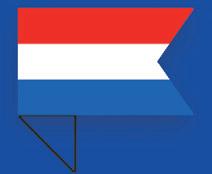





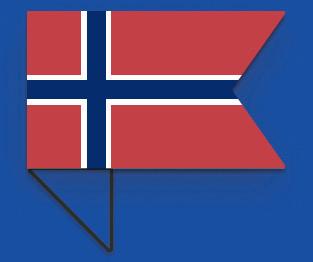






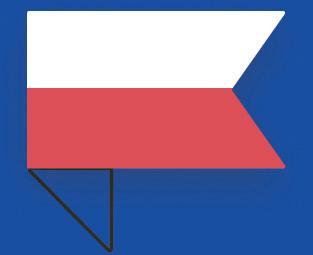


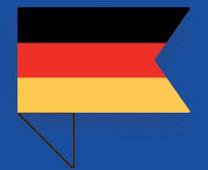

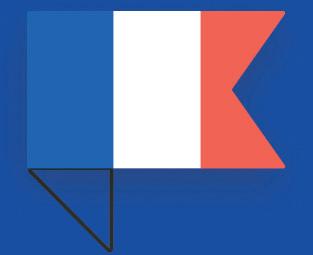

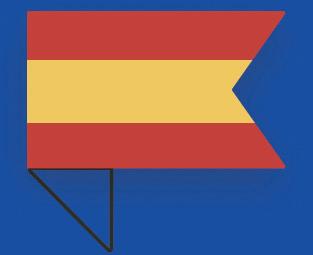

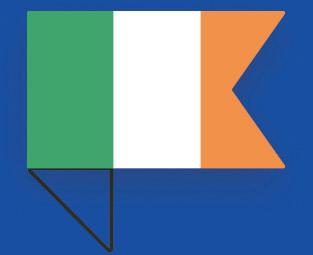






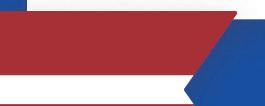
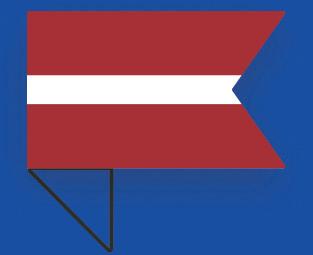

The UK is witnessing open banking’s most significant growth period to date, with almost 9% of the population - or 6 million people - now using open banking-enabled products and services. The UK also tops this year’s table with high digital readiness among the public, a pro-innovation regulatory environment, and the most TPPs across Europe.

Our analysis also finds that the UK processed the largest number of API calls and payment volumes over the last 12 months compared to its European neighbours, with payment conversion rates also increasing between 2021 to 2022.
UK banks are some of the most advanced in Europe when it comes to enabling APIs for TPPs to utilise. They are also keen to improve and evolve their capabilities as well as resolve reported issues when they arise. UK banks also offer wide coverage and a consistently high API standard.
The UK’s Faster Payments System, designed to speed up the process of sending and receiving money via bank-to-bank transfers, is enabling open banking payments to accelerate at speed. The Open Banking Implementation Entity (OBIE) continues to drive maturity across the UK’s open banking ecosystem but its future role remains uncertain.
Open banking has been embraced by the UK, but the focus must now move to swiftly building an open finance framework for the future.
Whilst the OBIE has been instrumental in ensuring the success of open banking in the UK, the CMA order is coming to an end later this year, potentially slowing momentum and leaving a gap which the OBIE used to fill.
To foster further innovation and adoption, the CMA must mandate VRPs beyond sweeping for UK banks. If the CMA9 and other banks can start to implement premium APIs beyond the minimum regulatory requirements, we will see the UK’s open banking ecosystem continue to accelerate.
Overall user experience and API quality are also areas for improvement.
The roll-out of open banking in Germany is continuing to gain momentum. The country’s open banking success has been impressive, with the largest number of TPPs in continental Europe and strong regulatory supervision from BaFin key drivers.
The Berlin Group standard is the most widely adopted across Europe, beyond Germany, providing a robust open banking framework for TPPs to integrate with German banks. Traditionally, Germany has been a cash-based economy, making migrating to new payment methods challenging. However, with the global pandemic accelerating existing trends towards digital, open banking adoption has been steadily increasing in the region since 2020.

German banks’ rate of response is rapid. They often revert with an informed solution and are keen to understand new ways to improve customer experience. German banks also offer rich coverage in all payment types, including bulk payments for retail accounts and a variety of authorisation flows to accommodate every bank type.
The German market is mature when it comes to API availability. However, some TPPs in the region often rely on legacy systems to implement this connectivity. Whilst German banks offer a range of premium API functionality built into their standards, notably, there isn’t widespread adoption beyond a select few.
More clarity on the scope of payment accounts in Germanyan example being that the definition of credit card accounts remains very narrow - would help to accelerate open banking in the region.
Additionally, German banks, regulators, and TPPs can come together to further improve widespread API quality and adoption.
Sweden leads some impressive results for the Nordics in this year’s table with regional regulatory regimes, highly developed digital infrastructures, and a collaborative approach to crossborder payments driving open banking maturity in the region.
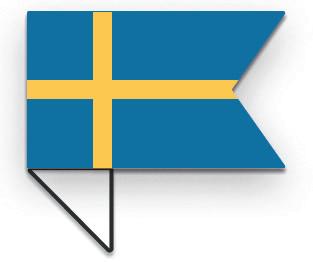
The use of cash in Sweden continues to decline rapidly. And with over 30 TPPs, it boasts one of the highest numbers of authorised AISPs and PISPs inside the EU. According to the European Commission’s Digital Economy and Society Index, Sweden is one of the most digitised societies in Europe. Combined with high levels of public trust, consumers in the region are ready to embrace open banking.
Sweden’s real-time account-to-account transfer platform creates fertile ground for the acceleration of open banking payments. Introduced in 2012 as a result of a collaboration between six of Sweden’s largest banks, Swish is now used by over 8 million people - 80% of the Swedish population.
Sweden should continue to focus on standardising APIs and improving bank uptimes to move up the table, with UX flows and API quality continuing to differ per bank.
Notably, the large Swedish banks have their own API sets alongside those of the aggregators. To take its open banking ecosystem to the next level, going forwards Sweden will be looking to streamline this complex API landscape.
France has been steadily embracing open banking and digital payments since the inception of PSD2 in 2018.
It has jumped up five places this year with the second-largest improvement in payment conversion rates between 2021 to 2022, indicating an uptick in API quality.
The regulator, Banque de France, has expressed a commitment to open finance innovation, but it is taking a cautious approach.
Six major banks in France have adopted the STET API standard allowing for easy implementation of different payment types.
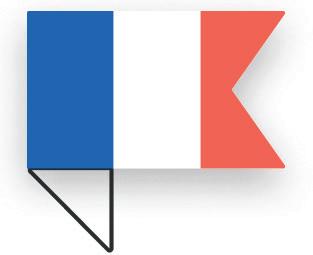
Lithuania’s position as the second-largest fintech hub in Europe (hot on the heels of the UK) is no accident. It is the result of deliberate policy and collaboration between the Government and the central bank. This continues to attract many TPPs from across the continent, with over 25 AISPs and PISPs registered in the region.
In Lithuania, there’s an appetite for innovation across the breadth of the financial ecosystem, not just among the fintech community. The fact that the Bank of Lithuania considers using Account Information Services (AIS) for reporting shows a deep-rooted understanding and interest in the distribution of this technology.
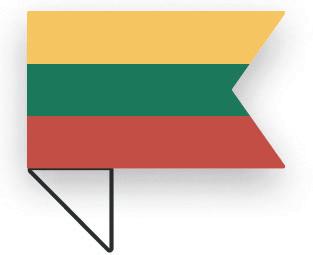
This positions Lithuania well for playing a leading role in the evolution and success of open banking across the EU, not just from a licensing perspective but a cultural one, too.
The country also boasts the highest API performance success rate in this year’s league table and secures the second-highest payments conversion rate behind the UK, illustrating continued investment in API quality and payments infrastructure.
As France’s open banking landscape continues to mature, it should look to implement a similar entity to the OBIE to ensure banks adopt new regulatory frameworks at pace.
Limited supervisory powers given to the Autorité de Contrôle Prudentiel et de Résolution (ACPR) means that regulatory monitoring and enforcement is still done at the EU level.
To continue to accelerate open banking and make it easier for TPPs to seamlessly integrate with multiple banks in the region, France will need to prioritise standardisation and collaboration going forwards.
Lithuania’s open banking ecosystem is accelerating at pace.
However, while the Lithuanian banks are generally very responsive with TPPs in the region, there is currently no consistent standard followed across the banks and there can be periods of downtime.
Although the Bank of Lithuania is receptive to open banking providers, enforceability and monitoring of API standards still have room for improvement, with varying implementations across different banks.
As one of the leading hubs for European fintech innovation, the Netherlands’ digital ecosystem is ripe for open banking acceleration.
Its native e-commerce payment system, iDEAL, enables customers to make purchases using direct online transfers from their bank account, paving the way for direct account-toaccount payments via open banking.
Whilst the Netherlands use the Berlin Group standard for open banking, this is supplemented with comprehensive regulatory supervision at a local level. A large number of banks in the region are offering API access to 22 TPPs in the region - one of the highest in Europe.
Denmark’s well-established mobile banking payments infrastructure makes it well prepared for open banking. It is also part of the Nordic P27 initiative, using the collaborative model to take their proven domestic payments system (MobilePay) to the next level.
Denmark also sees greater bank support for API customers than its other Nordic counterparts, with brilliant downtime communication, responsiveness, and willingness to solve issues.
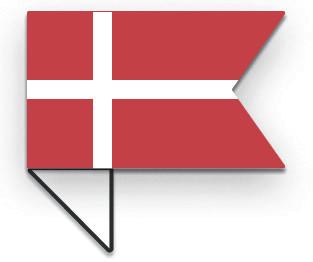
There is also wide coverage in the country and good regulatory presence with some guidance on the implementation of open banking made available.
Whilst the Netherlands boasts a mature payments ecosystem, its inhabitants can be more sceptical about third-party access to financial data.
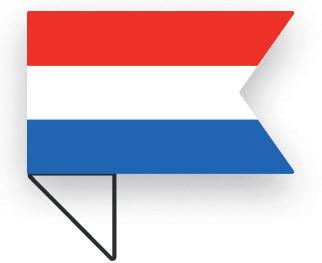
To realise open banking’s full potential, the ecosystem needs to work together to drive education on this point.
The region is also at risk of stifling innovation if regulators fail to keep pace with demand for the benefits of open banking payments among the consumer population.
There is room for Denmark to accelerate progress towards open banking by creating a specific industry body to oversee its standards and implementation, similar to the OBIE.
Alongside this, as a quickly maturing market, Denmark should aim to lay a foundation upon which open finance can be built in the coming years, bringing in regulation beyond that implemented at the EU level.
Open banking in Ireland continues to gain momentum since Allied Irish Banks launched its first APIs in late 2018. Ireland’s landscape echoes that of the UK’s in terms of API quality and bank reliability, with strong open banking infrastructure in place.
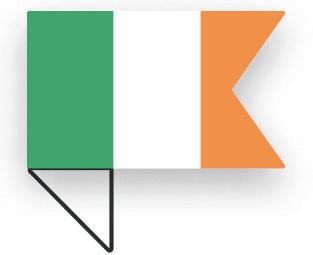
Notably, the Bank of Ireland has also issued guidance on open banking for consumers, improving education and awareness, which will help boost adoption rates. Post-Brexit, Ireland continues to be an attractive hub for many fintechs, with 9 TPPs now in the region.
Belgium has made notable progress in open banking over recent years, with banks increasingly enabling access to TPPs and a successful domestic instant payments system, Payconiq by Bancontact. In May 2022, the National Bank of Belgium (NBB) communicated the expectation for ASPSPs in the region to implement relevant guidance from the EBA and the EC by 31 March 2023.
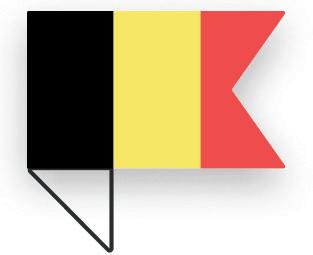
This shows a willingness and collaboration between European regulators and national banks to accelerate open banking adoption. Poland’s trajectory towards a mature open banking ecosystem is gaining pace as participants continue to take advantage of PSD2. The country boasts a competitive digital payments landscape with BLIK, the region’s instant payments mobile app which enables users to withdraw cash and send money between bank accounts in real-time.
In Q4 2021, over 10 million people actively used the BLIK payment method in Poland - a 44% increase from the same period in 2020 - indicating strong digital readiness among the population and an uptick in demand for instant payment methods. Other key drivers include the introduction of a domestic API standard, PolishAPI, in 2019.

Ireland is at a stage in its open banking journey that calls for more precise regulatory frameworks and oversight.
An dedicated open banking body would encourage banks to better support their API customers and prioritise innovation.
With banks using a combination of UK and Berlin Group standards in the region, resolving complexity for TPPs when integrating with a wide variety of banks should also be high on the agenda.
With regulatory support from the NBB, Belgium is taking positive steps towards a mature open banking ecosystem.
However, enforcement is still very much done at the EU level. Participants have also identified a lack of clarity around TPP access to payment accounts, specifically, the qualification of credit card accounts, as a potential obstacle.
Poland has a successful domestic payments system and its own API standard. To accelerate open banking, different interpretations and applications of the PolishAPI standard between banks will need to be addressed.
There is also a demand for more clarity from the Polish Financial Supervision Authority, KNF, on which participants fall into the scope of its rules around banking outsourcing.
In Spain, open banking adoption is steadily going in the right direction. Uptake is beginning to accelerate with more TPPs coming to the fore and Spain boasting the second largest improvement in API performance between 2021 to 2022, showing continued investment in the ecosystem.
What’s more, the steady growth in popularity of Bizum, Spain’s domestic payment scheme introduced in 2016, is enhancing Spanish banks’ mobile apps and encouraging the acceleration of instant account-to-account payments.
Since 2016, over 1.1 billion peer-to-peer payments with a total value of €54.5 billion have been made via Bizum. It is currently used by 20.5 million people across the country (47% of Spain’s total population) showing high levels of public readiness for open banking payments.
Whilst regulatory oversight in Spain is very much done at the EU level, Spanish banks have been quick to respond to instruction from the EBA, removing obstacles to the overall open banking experience. As an example, all spanish banks have now enabled app2app biometric authentication, making it quicker and easier for people to authenticate an open banking payment or data request.
Although many banks have made APIs available which adhere to the Berlin Group standard, quality across Spain remains patchy.

Additionally, issue ticket escalation and resolution systems within banks could be improved.
A large portion of institutions in the region are also supported by a single provider, Redsys, creating a potential concentrated risk of service reliability.
With many fast-movers across Europe, Spain will need to continue to focus on API support and maintenance to accelerate open banking.
Alongside Sweden and Denmark, Finland is part of the P27 initiative, a real-time domestic and cross-border payment system implemented across the Nordics.

Like its Nordic neighbours, Sweden boasts a tech-savvy population, with 89% of people in the country using online banking services.
With 13 TPPs in the region, Norway also presents an attractive option for fintechs.
To take its open banking ecosystem to the next level, Finland must focus on standardising APIs across the largest banks and improving bank uptimes.
Whilst most of the largest banks have integrated open banking APIs, three major players - Nordea, Financial Group, and Danske Bank - hold a significant portion of market share, creating a potential concentration risk.
To increase the appetite for instant payments, it would also be positive to see Finland’s domestic mobile payment app, ePassi, reach the same heights as Sweden’s Swish, Norway’s Vipps, and Denmark’s MobilePay.
Open banking in Austria continues to gain momentum, partly thanks to notable take-up and integration across the banks.
Austria also demonstrates a robust payments infrastructure and high payment conversion rates. The ecosystem continues to build on the introduction of a regulatory sandbox by the Austrian Financial Market Supervision (FMA) in 2020, making it a more attractive location for fintechs.
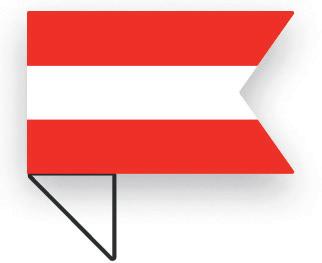
This initiative from the regulator shows a willingness to bring open banking to the forefront of technology innovation.
Whilst Austria has made strides towards a more mature open banking ecosystem, standardising API quality and performance remains a key focus.
Austria’s population is also slightly behind the curve when it comes to digital readiness, with the majority of people in the region still preferring to use cash and traditional banking methods.
That being said, the digital banking sector is growing with the emergence of mobile banking apps.
Norway’s open banking ecosystem follows a similar trend to the rest of the Nordic countries, with a healthy consumer appetite for technology and a strong domestic payment scheme - Vipps - creating fertile soil for open banking.
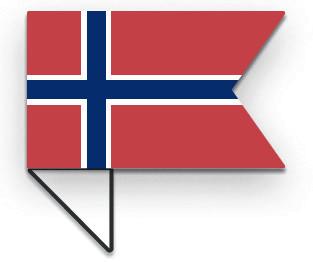
Norway’s eID-compliant digital identity service, BankID, has also been a significant driver of digitisation in the country.
Although the Nordic countries lack dedicated open banking oversight bodies like the UK’s OBIE, the ecosystem across Scandinavia is mature, and there is significant guidance around API implementation.
Estonia shows promise for open banking due to an advanced digital ecosystem, high levels of consumer trust, and the second-largest number of TPPs in the Baltic states.
This makes it well-positioned to embrace open banking in future.
As with Sweden, Denmark, and Finland, Norway would benefit from standardising APIs across the largest banks and improving bank uptimes.
Most large Norwegian banks have integrated open banking, although functionality can be limited when viewing accounts and transaction information.
Norway’s absence from the P27 initiative also means it hasn’t attracted the same levels of TPPs as its neighbours. However, its participation in the future is very likely.
Estonia scores well in bank integration and API customer support. However, a lack of consistency across the largest banks and frequent periods of downtime can make it difficult for TPPs to integrate.
Estonia should continue to focus on local regulatory oversight and API standardisation to accelerate its open banking ecosystem.
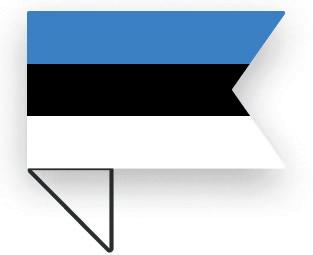
The adoption of open banking in Italy is gaining momentum as the country begins to transform its payments landscape.
Italy has improved its score by 1.2 points from 2021, showing positive signs of progress and a clear desire to accelerate open banking from players across the ecosystem.

For example, popular infrastructure providers in Italy, such as CBI Globe, have improved the quality of their PSD2 API interfaces, facilitating greater ease of integration for banks.
Italy is taking steps in the right direction, but will need to move quickly to keep pace with open banking innovation across the continent. With many businesses utilising open banking in the region, tighter supervision of regulatory standards would help boost this further.
Currently, inconsistencies in this area are creating challenges for TPPs and companies to offer a high-quality service to their customers. It would also help to increase integration outside of the top two to three banks. Going forwards, policymakers and banks should work together to improve education and understanding.
The Baltic region is embracing open banking, with most major banks in Latvia - dominated by Nordic groups such as Swedbank, SEB, and Luminor - now providing access to TPPs.
With the majority of the population using digital banking, Latvia also indicates good levels of digital readiness for initiatives like open banking to take hold.
Whilst Iceland’s level of open banking maturity is not yet comparable to its larger and more advanced European counterparts, it has made progress with a growing fintech scene. This, coupled with its smaller ecosystem, suggests that Iceland has the potential to move quickly on open banking if it should wish to in future.
However, there is still lots of work to do with the three big native commercial banks not yet offering open banking, supplemented by coverage from neobanks operating in the region.
For open banking to flourish in Latvia, the ecosystem will need to come together to tackle inconsistencies in the quality of bank integration and make the market more attractive for TPPs.

Monitoring and enforcement will have a key role to play here as open banking continues to be regulated at the EU level, potentially limiting opportunities for innovation and adoption.
For open banking in Iceland to take shape, the Central Bank must move quicker in providing a set of minimum standards and expectations on how it can and should be implemented.
Setting up specific legislation or a regulatory sandbox aimed at Iceland’s fintech community would be a great place to start.

It’s clear that open banking has continued to accelerate across Europe over the last 12 months, with the implementation of regulatory standards, consumer adoption of domestic instant payment methods, and increased levels of bank integration propelling us on our journey towards open finance.
However, as the ecosystem continues to evolve, there are several challenges and
Yapily is an open banking platform, allowing companies to seamlessly access financial data and initiate payments. Designed and built for open finance, our mission is simple: to become the central nervous system of the global economy.
opportunities on the horizon. It begins with improved collaboration between banks, governments, regulators, and TPPs at the local and EU level to address a lack of standardisation, and inconsistent levels of regulatory oversight and enforcement potentially stifling growth and innovation.
Beyond this, we must collectively turn our attention to open finance to allow access to customer data beyond the scope of PSD2.
Only then can we move towards the open economy of the future.
We are the European market leader in open banking infrastructure, enabling our customers to create better and more accessible financial services and products for everyone. We work with industry leaders including the likes of American Express,
Curious about how open banking can unlock your business potential?
Open banking has continued to accelerate across Europe over the last 12 months... propelling us on our journey towards open finance"
Intuit Quickbooks, and Vivid. Headquartered in London UK with offices in Germany and Lithuania, we employ over 200 people and continue to scale rapidly across Europe and beyond.
Get in touch with our team to find out how we can help at yapily.com/get-started

